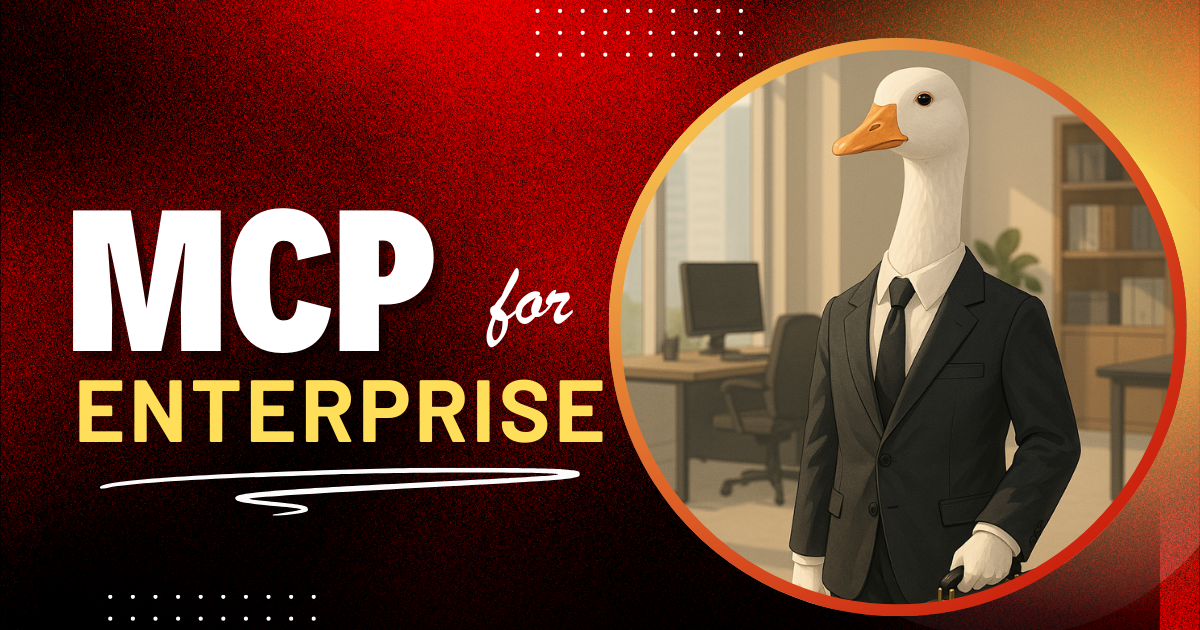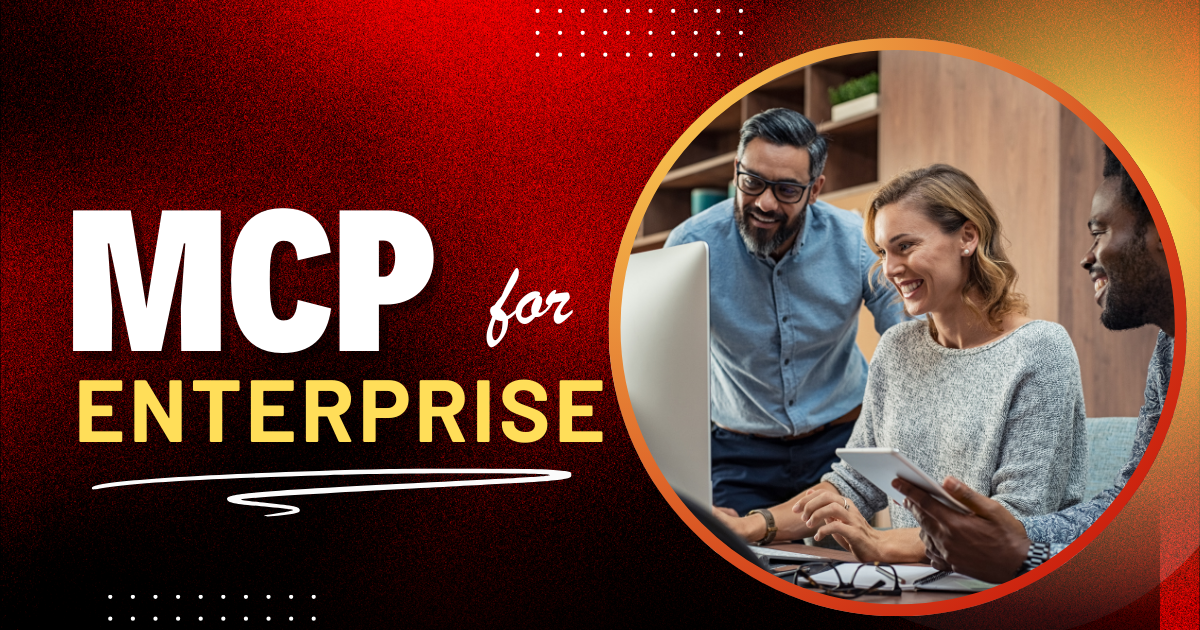MCP in the Enterprise: Real World Adoption at Block

At Block, we've been exploring how to make AI agents genuinely useful in a business setting. Not just for demos or prototypes, but for real, everyday work. As one of the early collaborators on the Model Context Protocol (MCP), we partnered with Anthropic to help shape and define the open standard that bridges AI agents with real-world tools and data.
MCP lets AI agents interact with APIs, tools, and data systems through a common interface. It eliminates the guesswork by exposing deterministic tool definitions, so the agent doesn't have to guess how to call an API. Instead, it focuses on what we actually want... results!
While others are still experimenting, we've rolled this out company-wide at Block, and with real impact.
Why We Chose MCP at Block
We didn't want to build one-off integrations or hardwire AI into a specific vendor ecosystem. Like most enterprise companies, our needs span engineering, design, security, compliance, customer support, sales, and more. We wanted flexibility.
MCP gives us that. It's model-agnostic and tool-agnostic, allowing our AI agent to interact with internal APIs, open source tools, and even off-the-shelf SaaS products, all through the same protocol.
It also aligns well with our security philosophy. MCP allows us to define which models can invoke which tools, and lets us annotate tools as "read-only" or "destructive" to require user confirmation when necessary.
How We Configure and Secure MCP
We developed Goose, an open source, MCP-compatible AI agent. Thousands of Block employees use the tool daily. Available as both a CLI and desktop app, Goose comes with default access to a curated set of approved MCP servers. Most employees report saving 50–75% of their time on common tasks, and several have shared that work which once took days can now be completed in just a few hours.
To ensure a secure and reliable experience, all MCP servers used internally are authored by our own engineers. This allows us to tailor each integration to our systems and use cases from development tools to compliance workflows.
Some of our most widely used MCPs include:
- Snowflake for querying internal data
- GitHub and Jira for software development workflows
- Slack and Google Drive for information gathering and task coordination
- Internal APIs for specialized use cases like compliance checks and support triage
In addition to tool access, Goose relies on large language models (LLMs) to interpret prompts and plan actions. We use Databricks as our LLM hosting platform, enabling Goose to interact with both Claude and OpenAI models through secure, enterprise-managed endpoints. We've established corporate agreements with model providers that include data usage protections, and we restrict Goose from being used with certain categories of sensitive data, in line with internal policies.
For service-level authorization, we use OAuth to securely distribute tokens. Goose is pre-configured to authenticate with commonly used services, and tokens are stored securely using native system keychains. Currently, OAuth flows are implemented directly within locally run MCP servers, a practical but temporary solution. We’re actively exploring more scalable, decoupled patterns for the future.
Additionally, some servers enforce LLM allowlists or restrict tool output from being shared across systems to further minimize data exposure risks.
Real Stories with Real Impact
Goose has become an everyday tool for teams across Block. With MCP servers acting as flexible connectors, employees are using automation in increasingly creative and practical ways to remove bottlenecks and focus on higher-value work.
Our engineers are using MCP-powered tools to migrate legacy codebases, refactor and simplify complex logic, generate unit tests, streamline dependency upgrades, and speed up triage workflows. Goose helps developers work across unfamiliar systems, reduce repetitive coding tasks, and deliver improvements faster than traditional approaches.
Data and operations teams are using Goose to query internal systems, summarize large datasets, automate reporting, and surface relevant context from multiple sources. In many cases, this reduces the reliance on manual data pulls or lengthy back-and-forths with specialists, making insights more accessible to everyone.
Meanwhile, teams in design, product, support, and risk are utilizing Goose in ways that remove overhead from their daily work. Whether it's generating documentation, triaging tickets, or creating prototypes, MCP-based workflows are proving adaptable beyond engineering.
This shift is helping eliminate the mechanical work that slows us down. As more teams experiment, they discover new ways to collaborate with Goose and reshape how things get done.
What We've Learned So Far
Rolling out MCP tooling company-wide required more than just technical setup. We invested in:
- Pre-installed agent access and default server bundles
- Weekly education sessions from our internal Developer Relations team
- Internal communication channels to seek help as well as share and celebrate wins
Some of our takeaways:
- The easier we made it to start - by pre-installing Goose, bundling MCPs, and auto-configuring models - the faster adoption took off
- People get more creative once they see what's possible, especially when they can remix or build on what others have already done
- Centralized onboarding and prompt sharing saves time and helps scale best practices
What's Next
We're continuing to expand use cases outside of traditional engineering teams. MCP is helping unblock marketing, sales, and support workflows, and we're just getting started.
We're also investing in:
- More secure defaults and tooling restrictions based on context
- Human-in-the-loop features for higher risk operations
- Encouraging open source MCP contributions from across the company
Want to Learn More?
If you're curious about Goose or MCP, check out the Goose documentation or MCP spec. We'd love to hear how others are approaching AI automation at scale.
